The Definitive Shure SM58 Review
Does the most popular live vocal mic in the world really live up to its reputation?
We put the Shure SM58 through its paces.
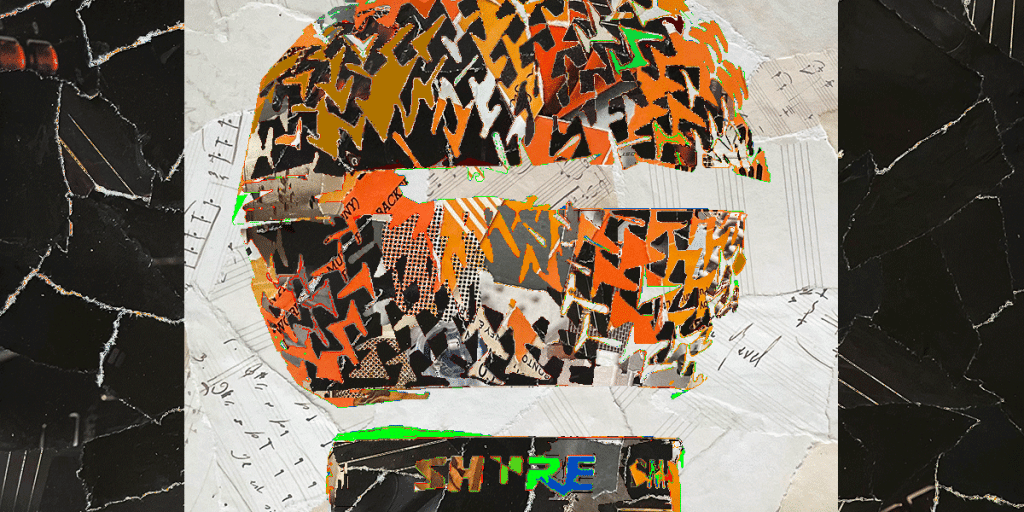
Reviewed by: Paul Narang
Last update: November 2023
Price: Around $100
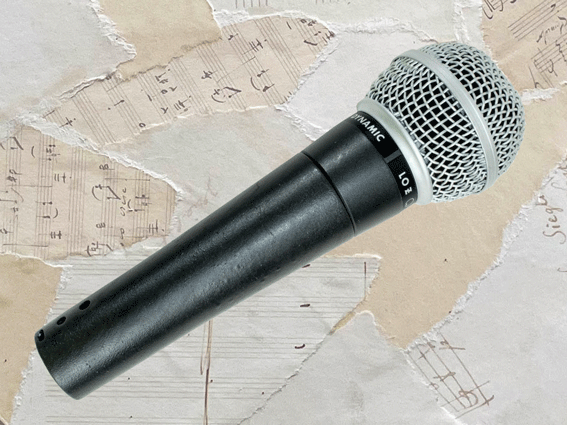

Shure SM58 Review
| Pros: | Cons: |
| Warm, clear sound Rugged and reliable Incredible reputation | Can sound too warm |
Shure SM58 Review
Probably the most popular vocal microphone of all time, the Shure SM58 can be heard on stages and recordings of all the great artists. The SM58 is a rugged dynamic vocal mic, famed for both sound and reliability in live use.
What is it?
When Shure launched the SM58 way back in 1966, little did they know they were about to introduce the most popular vocal mic of all time.
It quickly became the industry standard for live vocals, due to its combination of warm sound, and tank-like reliability. Rock singers were the first to adopt the SM58, but just about every other genre soon followed suite.
It’s popularity is due to to a combination of popstar heritage, and no frills simplicity. The SM58 is a solidly built, dynamic vocal mic with a cardioid pick up pattern. It’s well suited to a loud stage, rejecting feedback, with minimal handling noise.
Let’s see how it fares in this Shure SM58 review.
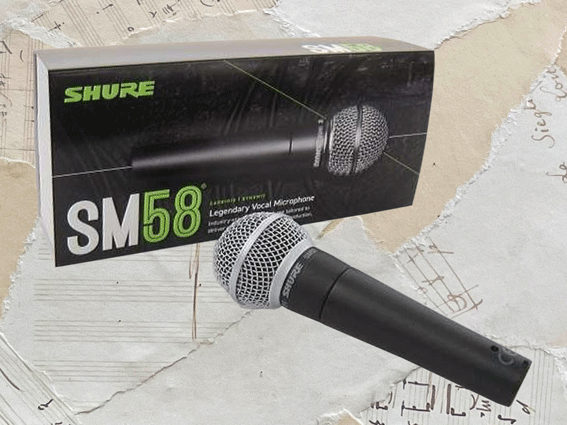
In the box
The SM58 arrived wrapped in bubble wrap, in a smart cardboard box. Also included:
- Soft protective pouch
- User manual
- Velcro strap
- Stand Adapter
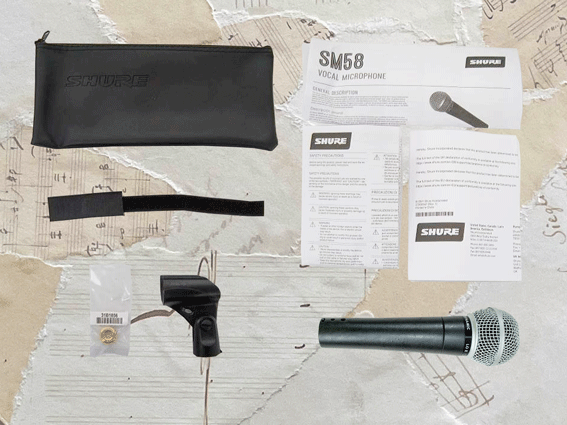
Dynamic vs condenser microphone
The Shure SM58 is a ‘dynamic’ mic, making it particularly suitable for live use. Dynamic microphones differ to ‘condenser’ microphones in the following ways:
- They’re less sensitive (suitable for loud sounds)
- They’re less prone to feedback on stage
- They’re more rugged and durable for live use
- They’re cheaper
- There’s no need for batteries or phantom power
Dynamic mics in the home recording studio
Although dynamic mics are regularly used in live performance, they also have a unique place in the studio. The lack of sensitivity might sound like a drawback, but it can also work to your advantage.
A dynamic microphone, particularly one with a cardioid polar pattern, will pick up less of a poor sounding room, street sounds, or distant traffic rumble. It’s also the ideal choice for loud instruments such as drums and brass.
They also have their own tone, and can be used to tame shrill sounding instruments, or to add darkness and grit to overly bright vocals.
SM58 Polar pattern
Like many dynamic microphones the Shure SM58 uses a cardioid pickup pattern, which is a heart shape. It picks up sound from the front, but rejects sound from the back and sides. This makes it ideal for use on stage, where you can isolate the vocals from other noisy instruments.
It’s also handy for the studio when you have 2 or more singers or instrumentalists recording at the same time.

What’s the difference between the SM58-S vs SM58-LC?
It can be difficult to work out what the differences are between the variations of SM58s. It’s actually much simpler than it first appears. There’s just 2 versions of the SM58 – one with a switch and one without a switch.
The one without a switch used to be called the SM58 LCE, but is now called the Shure SM58 LC. The LC used to stand for ‘less cable’, but that was a long time ago.
The omission of a switch on the SM58 LC adds to the robust simplicity of the microphone, leaving less to go wrong at a crucial moment. Having no on-off switch is common for pro-level microphones designed for the stage, as the sound tends to be controlled from the live mixing engineer, and they want to make sure the vocalist doesn’t accidentally switch the mic off.
The SM58 with a switch used to called the SM58 SE, but is now called the Shure SM58S. It’s slightly more expensive than the SM58 LC. Having a switch is useful for being able to turn the mic off if you need to discreetly talk to other band members.
But just when you thought it was all clear, Shure also offer the SM58-CN, which comes with a 7.6 m XLR cable. And then there’s the SM58-CN BTS, which comes with a cable and a stand.
Phantom power for the Shure SM58?
The SM58 is a dynamic mic, which means it doesn’t require any form of external power. There’s no need for batteries, or ‘phantom power’ from the audio interface or mixer.
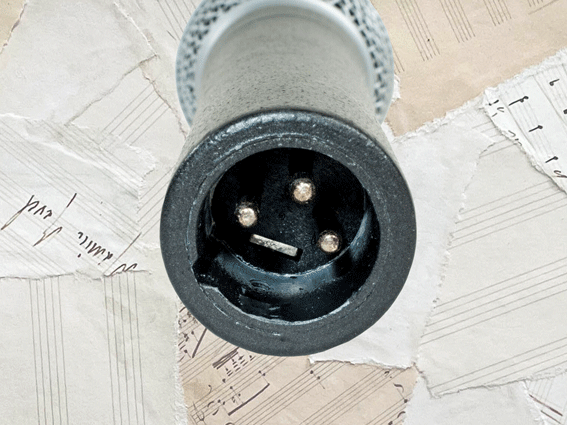
Connecting the Shure SM58
The SM58 uses an XLR cable to connect directly to an audio interface or mixer. XLR are the standard connectors on all professional studio equipment. They’re ‘balanced’, which means the cables are shielded from interference and carry a higher signal than unbalanced cables.
If your audio interface or mixer has 1/4″ jack inputs, you’ll need a cable with an XLR connector on one end, and a 1/4″ jack on the other, like this. Keeping cable lengths to a minimum is good practice to maintain the best signal.
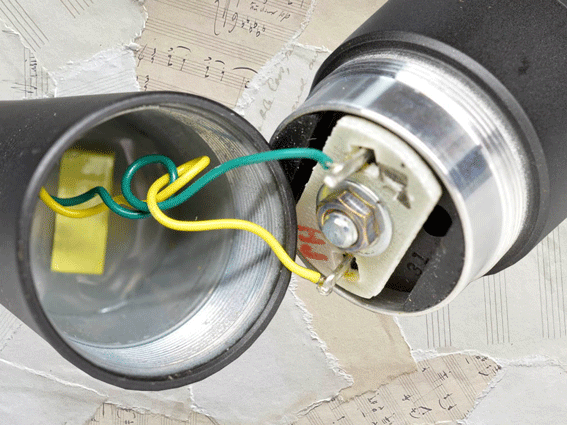
The Shure SM58 design and build
There isn’t much to say about the SM58’s looks – to anyone not in the know, it appears no different to any other dynamic microphone. It’s a simple design, with a traditional black body and a spherical silver grille. Only the ‘Shure SM58’ branding underneath the grille give away this mic’s true nobility and heritage.
While it may look ordinary, it certainly isn’t ordinary in build. With its die cast steel body, the SM58 is well known for its strength and longevity. These mics survive years of daily abuse at the hands of crazed rockstars on the road. They’ll withstand continuous knocks and drops, always trusted to perform when needed.
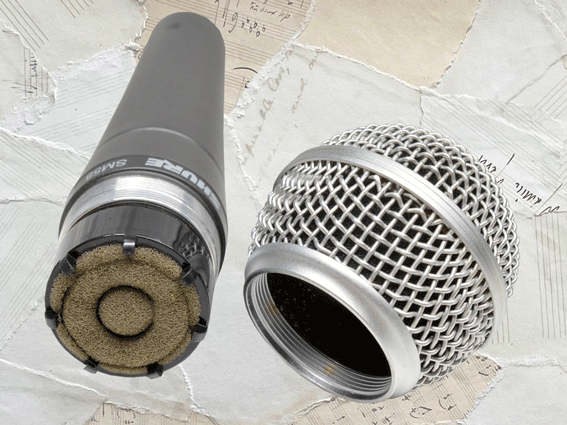
Off stage, the grille can be unscrewed and cleaned, or even replaced. Taking the grille off reveals a spherical filter which helps to counteract any pops or plosives caused by short bursts of air. There’s also an integrated pneumatic shock mount system, insulating the capsule from any handling interference. Parts are easy to replace, so you can in theory keep an SM58 going for ever.
The design has stayed the same for decades for a reason – it works. Yes, dynamic microphone technology has come on leaps and bounds since 1966. And yes, there are more sophisticated sounding mics out there. But there’s something so attractive about a simple, rugged, moving coil dynamic mic. There’s no moving parts to go wrong – the SM58 is a performance tool you can rely on.
If you really need your SM58 to look as special as it sounds, there’s a few companies who decorate SM58s to fit your personal style. There’s a few studded with Swarovski crystals, if that’s your thing!
Shure SM58 Dimensions and Weight
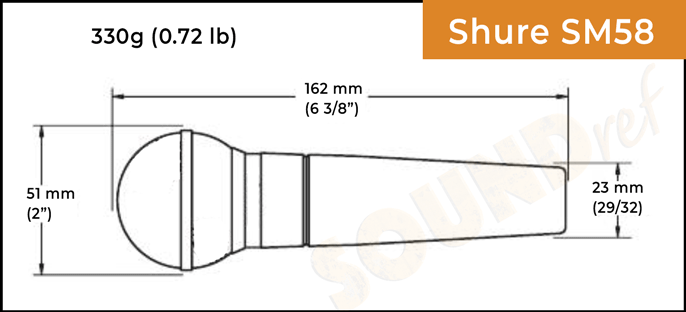
- Weight 0.33 kg (0.72 lb)
- Dimensions: 51mm x 162mm (2 x 6 3/8 inches)
Shure SM58 vs SM57
The SM58 is virtually identical to the SM57, the 57 more suited to instruments and the 58 to vocals. They have the same cartridge, and internal electronics, but different grilles.
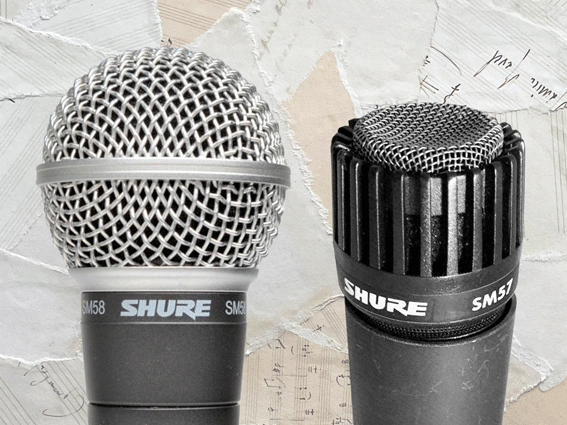
As the SM58 was designed for vocals, it uses a larger, ball shaped grille, which houses a pop filter to cut out any pops or plosives. The SM57 on the other hand, has a flat grille which enables it to get closer into instruments. This increases the proximity effect – the closer you are to the sound source, the more bassier the sound. There’s no pop filter in the SM57, as there’s no room for one. But you do get a slightly higher output above 5 kHz.
There’s nothing stopping you using the SM57 as a vocal mic too – many singers do. You might find the increased higher frequency response and bass boost is just what your voice needs. If you get the chance, try them both out, and see which mic suits your voice more.
Shure SM58 Frequency range
The frequency response of a microphone is determined by many factors. The internal capsule, the shape and materials of the mic, and the shape of the grille. Small changes in any of these will lead to a different frequency response.
Of course the singer can also make changes to the frequency response by how they position themselves in front of the mic. The most obvious example of this by coming in close to boost the bass. The spherical grille on the SM58 effectively puts a limit on how close the singer can get to the capsule, to make sure the bass response never becomes overwhelming.
The frequency response of the SM58 is especially tailored to suit a wide range of male and female voices. The frequency range extends from 50Hz to 15kHz. This is a wide range, capable of capturing most instruments or vocals, but not all frequencies are picked up equally.
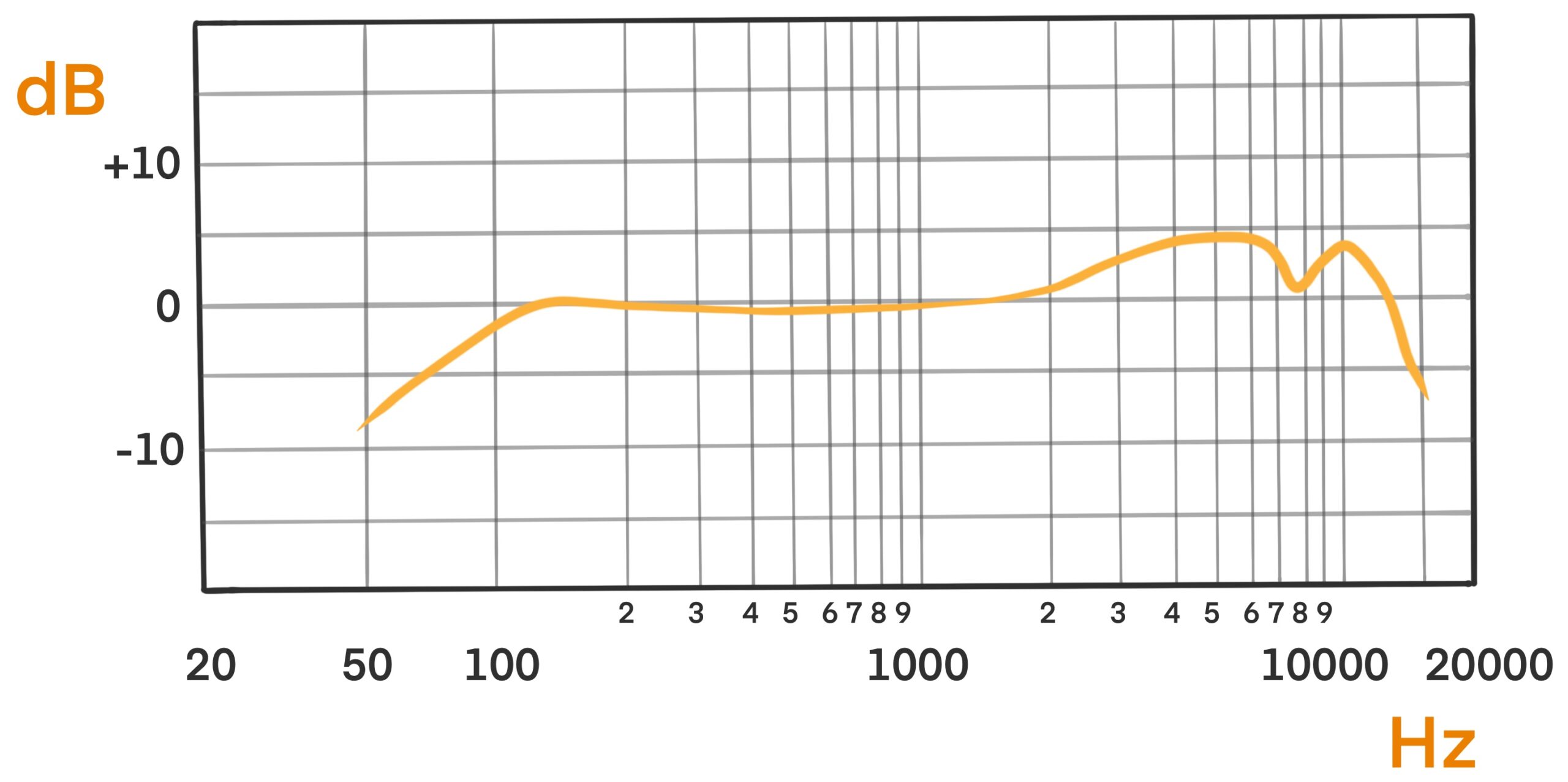
There’s a slight boost in the middle range, from 1 to 3kHz. This is what gives the SM58 a full sound, and helps to classify it as a ‘warm’ mic.
Further up the frequency chart, a boost of 5dB at 4-6Khz, provides presence. This adds to the clarity and definition in the sound.
At the top end of the frequency chart, we see a 4dB boost at 10kHz. This is the domain of pure harmonics. The boost here provides an airiness and natural lift, giving your voice that subtle sparkle.
It’s not easy to achieve parity across the entire frequency range, but the SM58 seems to strike a good balance. It’s a warm sounding mic which still has enough high frequency power to cut through a mix without having to adjust the EQ.
Although the SM58 is clearly designed, and used as a vocal mic, the frequency response is also suited to recording a range of musical instruments. They sound fantastic on guitar amps, drums, and other bright and loud sound sources such as brass instruments.
SM58 Sensitivity and Impedance
Some microphones are more sensitive than others. The more sensitive the mic, the louder, or ‘hotter’ the output. Condenser mics are generally more sensitive than dynamic mics, and have no problem delivering a strong signal to the mixing desk or audio interface.
Lower sensitivity mics, such as the SM58 work well in a noisy live environment, picking up less of the ambient sound, and more of the vocalist. They’re also great for recording loud sound sources such as brass or drums.
Like most professional microphones the SM58 has a low output impedance, stated as a nominal impedance of 300 ohms. This makes it a good performer across long cable runs, and less susceptible to external interference.
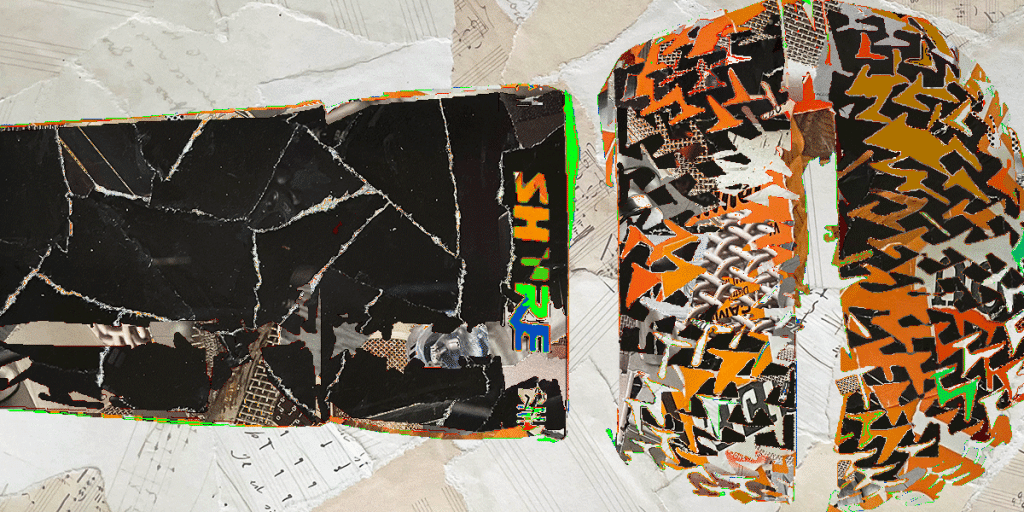
SM58 Sound quality
The SM58 is a warm sounding mic, with a crisp clarity helping it to cut through the mix. It adds a fullness, shaping the sound by rolling off the lowest and highest frequencies. It’s a sonic formula that seems to suit a wide variety of voices, from deep males to floating vocals.
The SM58 has slightly less top end than a similar mic such as the Sennheiser E935. While this may sound like a limitation, it actually helps with rejecting feedback on stage. But if you have a particularly dull sounding voice, with limited high frequency content, you might want to also audition something brighter.
There’s also bright sounding dynamic vocal mics out there more efficient at picking up detail. It depends on the characteristics of your voice and the sound you’re looking to achieve. The SM58 is particularly good at rounding off any harshness and delivering warm, vibrant vocals.
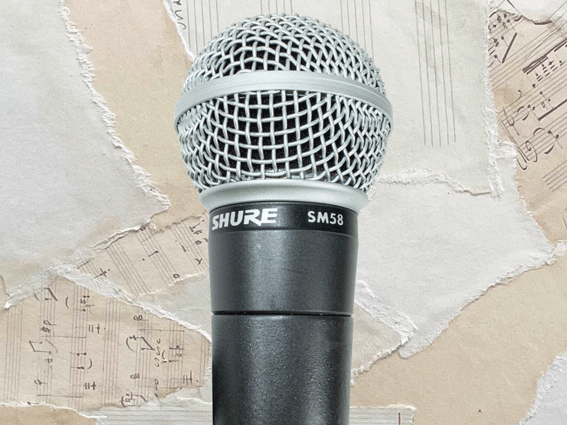
Shure SM58 Dynamic Microphone in Performance
The SM58 is the most widely used mic for vocal performance in the world. The reason it’s so popular are multiple:
- low feedback on stage
- cardioid pick up pattern rejects sounds to the side
- built in foam pop filter
- very low handling noise
- built like a tank
- rounded, refined sound
- handles very high SPL levels
Another consideration – it’s a good mic to get used to, as you’re likely be handed an SM58 when you appear on stage at a venue you don’t know. You’ll instantly know how to get the most of it. Similarly, if you take your SM58 to an open mic, or to guest with a band, the engineer will already be familiar with it.
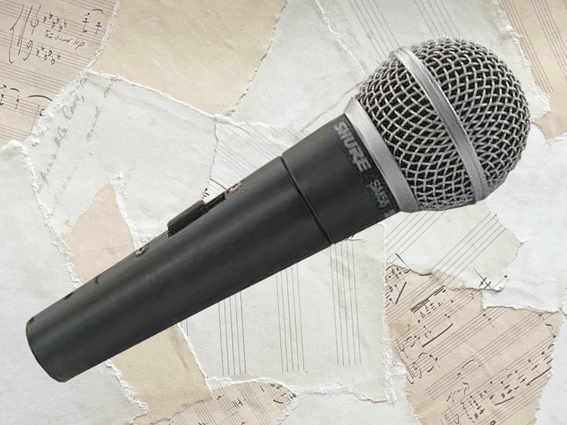
As it’s so versatile, it’s common to find a stock of SM58s at a range of venues. Auditoriums, recording studios, places of worship, podcast studios and conferences are all regular users. As well as being reliable, engineers know that the SM58 is unlikely to reach its distortion point, even with the loudest sound sources.
In the recording studio, vocalists often ditch their dynamic mics and make use of super expensive condenser mics such as the Nuemann U87. But there’s many musicians who insist on using their SM58 for recording as well as stage use. Especially rock orientated musicians such as Joe Strummer of The Clash, when he recorded London Calling.
As it’s a dynamic mic, it’s less likely to pick up the acoustics of a small or untreated room. This makes it ideal for the budget home studio.
A surprising Shure SM58 history
The SM57 (1965) and SM58 (1966) were based on Shure’s popular ‘Unidyne III 545’ of 1959. This was a mic developed by Ernie Seeler for PA systems, and it already incorporated a pneumatic shock mount. Reliability and strength were important to Ernie, and Shure report that he tested the mic by “dropping, cooking, freezing, and submerging it”.
For the SM series, Shure decided to loose the on/off switch, retain its durability, and promote it for broadcast use. SM originally stood for ‘studio microphone’
But the company found the broadcast market a difficult nut to crack, due to stiff competition by established companies, such as RCA, EV and AKG. Sales were slow, and Shure began having discussions about discontinuing both the SM57 and SM58. It wasn’t until they began pitching the SM series to live sound engineers, that the mics found their natural market.
But the story doesn’t stop there. An upgraded version of the SM58, the Beta 58 appeared in 1989, followed by the Shure Beta 58A in 1996. Despite these improved models, and several from other companies, the SM58 still holds onto its title as the go-to live vocal mic, for a budget price.
Shure SM58 vs Sennheiser E935
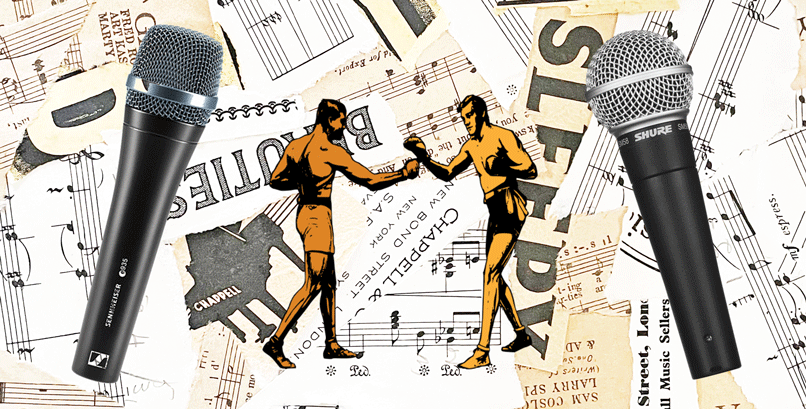
The SM58 and the Sennheiser E935 are similarly constructed mics, and both popular for live vocals. Both the Shure SM58 and E935 have metal bodies and grilles. They’re both handheld dynamic cardioid vocal mics, with a similar overall frequency range. And they both excel in live performances, each with an internal shock mount and excellent feedback rejection.
The biggest difference between the two mics is how they sound and how they look. The Shure SM58 microphone is ‘warm’ sounding, which means if the voice is already too warm, or deep, the sound can be prone to congestion, or muddiness in the lower frequencies. However, the Sennheiser E935 is an overall brighter sounding mic.
Unlike the SM58, the E935 doesn’t respond as aggressively as the SM58 to the proximity effect. This can work both ways – if you have good vocal microphone technique, you can bring in the proximity effect whenever you need it. But if you’re a vocalist who likes to be (or needs to be) close to the mic, the E935 might be more easier to use.
There’s no winner between the two – they have different characteristics which will suit different voices and situations.
Something to also consider is that the Sennheiser E 935 mic comes with a 10 year manufacturer’s warranty, whereas the Shure SM58 only has 2 years. In reality though, they’re both very well made mics, and if something was to go wrong, it would probably happen in the first couple of weeks.
Shure SM58 vs Shure Beta 58A
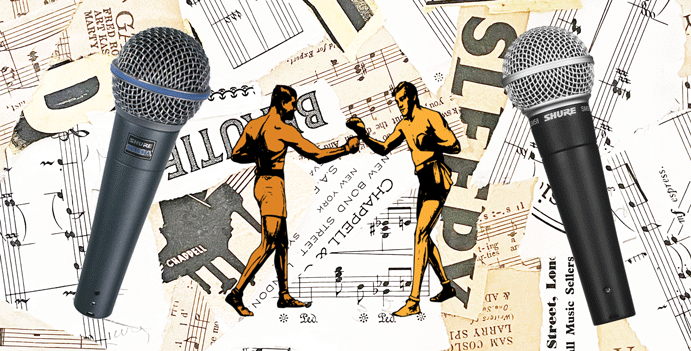
The Beta 58A is Shure’s upgrade to the SM58. You can instantly tell them apart, as the Beta58A has a blue tinge. It’s a brighter mic, with an extended frequency range at the top end. It makes use of an upgraded capsule which is more sensitive, making the Beta 58A 4dB louder.
The Beta 58A also has a sophisticated internal shock mount system which is more effective than the SM58. It also has a grille made from hardened steel, making it even more indestructible than the SM58.
A big difference between the two mics is the pick up patterns. The SM58 is cardioid, whereas the Beta 58A is supercardioid. Supercardioid polar pattern mics are superioir at suppressing noise from the sides of the mic. But that’s at the cost of picking up more sound than a cardioid mic from the back. You also have to be right on the mic to get a good sound from a supercardioid, whereas a cardioid allows some freedom to move around.
– More about pick up patterns here –
Despite all these clear improvements, many vocalists still choose the original SM58, which is easy to handle and considerably cheaper.
Holding the SM58
Where you hold the microphone in relation to your mouth can make a big difference in sound. Professional vocalists are always repositioning their mics to change the tone and add expression to their performance.
Always hold the vocal mic by the main body, and if there’s too much sibilance, try holding it slightly to the side.
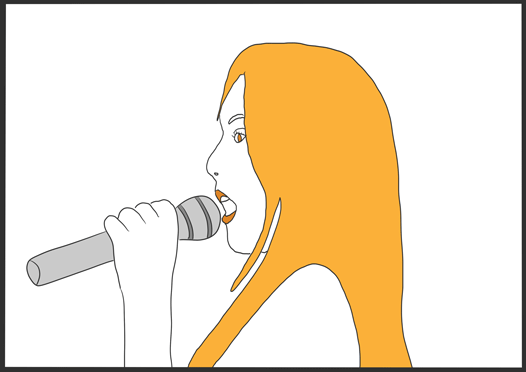
When you have other instruments in close proximity and you just want the sound of the voice, it’s best to sing or speak directly into the mic. This will add more bass to the sound, due to the ‘proximity effect’. It’s an effect used by radio presenters to give them very deep voices.
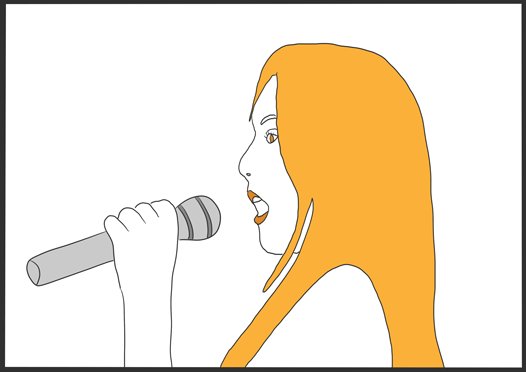
For a more natural, balanced sound, hold the mic between 5 and 10 cm away from your mouth. There’ll be less of the proximity effect, and the mic will pick up more sounds from other instruments, and the acoustics of the room.
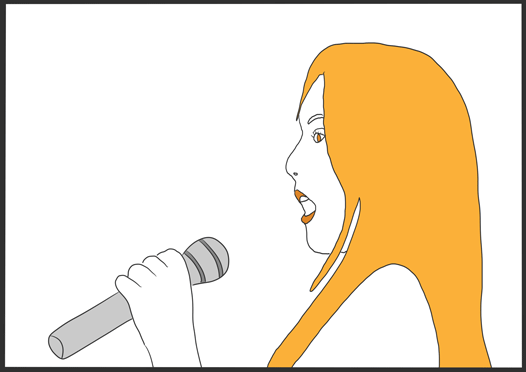
To bring in more of the room sound, and the instruments around you, hold the mic 10 cm or more away from your mouth. This is also a good position for any sudden loud notes, or to shape, and tail off a long note.
What else do you need?
With any vocal microphone, you’ll need:
- Microphone stand
Mic stands reduce any handling noise in the studio. Try a good quality boom stand, with a tripod base like the K&M 210/2
- XLR cable
If you want the best quality XLR cables, try these. Go for the shorter lengths where possible.
- Pop shield
This is to stop little bursts of air causing bassy pops on your studio recordings. You can easily make one of these out of stockings, or buy one here.
The SM58 already has a pop filter built into it, which is great for when you’re on stage. But in the studio it’s worth using a separate pop shield for that added protection.
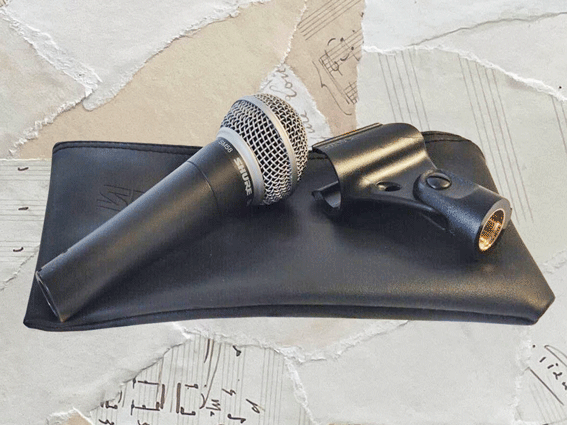
Conclusion
The Shure SM58 is a classic vocal microphone which excels in live performance. Feedback rejection, low handling noise and indestructibility combine with a smooth warm sound to form the most popular vocal microphone of all time.
There’s other alternatives, with much higher spec, but they cost far more, and won’t necessarily improve your sound. If you’re buying your first pro-level vocal mic, the SM58 should be at the top of your list.
Shure SM58 Frequently Asked Questions
How do I know if my SM58 is counterfeit?
The grille and band on a real SM58 is matt grey, not shiny silver. Also, at the bottom end, the pin numbers are raised on a genuine SM58, not flat. Also look out for poor print quality on the microphone and box of a fake SM58.
Why is the Shure SM58 so popular?
The popularity of the SM58 is due to low feedback on stage, great side rejection, a built in pop filter, low handling noise, the tank-like build, warm clear sound, and the ability to handle loud sound sources.
Is the Shure SM58 mono or stereo?
The SM58 is a mono microphone. You could use two of them to create the left and right of a stereo signal.
